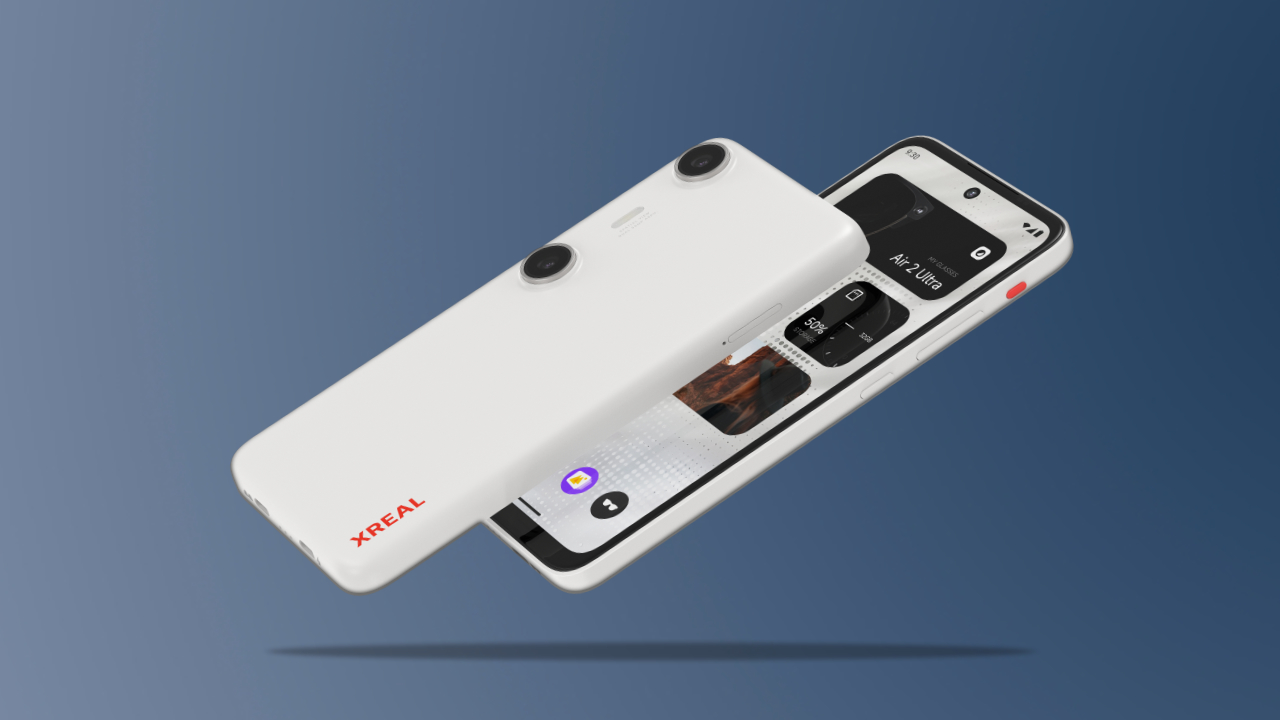
In 2020, the U.S. Commerce Department changed an export rule to prevent foundries using American technology from shipping cutting-edge chips to Huawei. The latter was able to obtain Snapdragon chipsets for the P50, Mate 50, and P60 flagships although these chips were tweaked so that they couldn't work with 5G networks. Then, last August, Huawei stunned the world by introducing the Mate 60 Pro which was powered by its first new Kirin chip since 2020, the Kirin 9000s.
Because the Kirin 9000s could support 5G, for the first time since 2020's Mate 40 series, Huawei had the capabilities to produce a phone with support for 5G. Still, the Kirin 9000s was built using SMIC's 7nm mode preventing it from having as many transistors as the A17 Pro application processor (AP) used by Apple for the iPhone 15 Pro and iPhone 15 Pro Max. Built on TSMC's 3nm node, the A17 Pro is equipped with 19 billion transistors compared to 8.5 billion transistors inside the 7nm A13 Bionic that powered the iPhone 11 line.
While Huawei now has the capabilities to build a 5G chipset, at 7nm it remains behind the 3nm node that will be used to manufacture the latest APs from Apple, Qualcomm, and MediaTek later this year. And since SMIC and Huawei are banned from buying the extreme ultraviolet lithography machines needed to etch the incredibly thin lines on the silicon wafers that get cut into chip dies, it appeared that Huawei couldn't obtain chips any more advanced than 7nm.

But with rumors swirling all around SMIC and Huawei about their ability to create 5nm chips using older deep ultraviolet lithography machines (DUV), a tweet from an "X" subscriber named @jasonwill101 (via Wccftech) suggests that SMIC has already completed the taping out stage for 5nm chips. That means that the process now moves from chip design to production making this a rather monumental moment for the two Chinese companies.
SMIC is expected to charge Huawei much more for its 5nm production since using the DUV machine for such cutting-edge silicon results in lower yields and requires more work. Even if SMIC can get to 5nm using DUV, the real question is how it will get to 3nm and even more advanced without having access to an EUV machine. Last month, we told you that Huawei had filed a patent for a technology called self-aligned quadruple patterning (SAQP) lithography that might help the company obtain 3nm chips. But even then, leading foundries like TSMC and Samsung Foundry will be moving ahead to 2nm during the second half of 2025.
If SMIC, which is now the third largest foundry in the world after TSMC and Samsung, is able to build 5nm chipsets in 2024, they should debut later this year on Huawei's Mate 70 series.

While a lot of the augmented reality (AR) products that we've seen so far revolve around wearable headgear, it looks like XREAL wants to shake things up a bit following the launch of the XREAL Beam Pro, a phone that's specially-designed to take advantage of AR technology.
At first glance the device looks like a rather "standard" smartphone, featuring a 6.5-inch LCD 2K (2400 x 1080) screen and a chassis that's not too different from most handsets on the market these days. Inside is a Snapdragon chip with up to 8GB of RAM, with Android 14 running the show (albeit with XREAL's own NebulaOS on top). The device also features dual 50MP 3D cameras, allowing users to record spatial videos with 1080p resolution, at 60 frames per second.

With that said though, its core standout features are possible using a custom spatial UI, which is built on XREAL's NebulaOS. This allows users to immerse themselves with 2D apps, now presented in an optimized 3DoF or 6DoF spatial environment via XREAL's AR glasses - this includes entertainment and content streaming platforms, as well as games available on the Google PlayStore.

The company is pretty confident that the Beam Pro has what it takes to stand out in its respective market segment. XREAL Founder and CEO Chi Xu states:
With XREAL Beam Pro we chose a uniquely simple design that features a familiar Android mobile experience to open the door to a new world of spatial computing that everyone can enjoy. We are joined today by supporters, including Qualcomm Technologies and others, and we see the mobile internet evolving to the spatial internet and foresee XREAL Beam Pro plus XREAL glasses as the ultimate AR solution to explore millions of apps in 3D space.
The XREAL Beam Pro will be available in both Wi-Fi and 5G models, with 6GB/128GB and 8GB/256GB (expandable) storage and memory configurations. Pricing starts at $199, with pre-orders now open for the United States, United Kingdom, Germany, France, Italy, Netherlands, Czech, China and Japan.

Insta360 is a company probably best known for their digital cameras that can capture 360-degree content. But the company also makes action cameras that might be preferred by those who want something compact and durable. Now the company has announced their latest model to the lineup in the form of the Insta360 GO 3S.
If you're wondering why this sounds familiar, it is because the company launched the GO 3 back in 2023, so this is kind of like a successor. It features a small and compact body, but despite its size, it can still capture stunning footage at 4K resolution. It also boasts 50% more computing power, according to Insta360, along with a new wide-angle lens that has less distortion.

There are also software features like Interval Video mode that allows the camera to capture footage throughout the day. The Insta360 GO 3S also supports hand gestures that users can use to start or stop shooting. Similar to its predecessor, users can attach or detach it from the Action Pod.
The company says that on its own, it can capture 1080p video at 30 fps for up to 38 minutes, or up to 140 minutes when used with the Action Pod. Insta360 has also thoughtfully included support for Apple's Find My Network to help you locate the camera if it's misplaced. If you're interested in the camera, it is priced starting at $416.99 and is available for purchase from the company's website.

A while back, we got word that Rokid was planning to unveil its Kickstarter-funded AR Lite glasses, which come equipped with augmented reality (AR) capabilities, allowing for a versatile range of use cases including entertainment and productivity, without sacrificing portability and comfort.
With that being said, Rokid has shared more details of the AR Lite, which are currently priced at $749 (much more affordable than the Apple Vision Pro, by the way). For starters, it's powered by the Qualcomm Snapdragon 6 Gen 1, and runs on a custom operating system which Rokid calls the "YodaOS-Master" OS.

It also comes with adjustable myopia dials (0.00 to -6.00D) and software-based IPD adjustment (53 to 75mm) for a varied fit suitable for users with different requirements. High-resolution visuals (1080p-1200p) and up to 600 nits brightness are accompanied by high frame rates of 120Hz or 90Hz which should provide a fluid viewing experience.
The Rokid AR Lite offers multiple display modes - Giant-Screen Mode blows up a single app to a massive 300 inches for more immersive user experience, while Multi-App Mode lets users run multiple apps simultaneously on separate floating screens for multitasking.

For navigation and controls, the AR Lite comes with touch controls, as well as a dedicated motion mode on the Rokid Station 2, which provides screen stabilization to minimize dizziness during head movements. The Rokid AR Lite is available for pre-order on Kickstarter, and early backers can purchase the device at a lower price of $499.

While "spatial computing" is not an entirely new technological concept (sorry Apple), it's taken a bit of time for manufacturers to develop devices specifically geared for such applications. With that in mind, Acer recently announced that it was launching its first-ever spatial computing product in the form of the SpatialLabs Eyes Stereo Camera.
As you can tell from its name, the camera is unique in that it offers a form of stereoscopic 3D vision, made possible with two cameras, each equipped with 8MP sensors. It also comes with manual mode that allows users to tweak elements such as ISO, white balance, shutter speed and more. There's also electronic image stabilization (EIS), although Acer has also included built-in 6-axis gyroscopic stabilization.

Photos and videos saved on the SpatialLabs Eyes can be viewed via a downloadable app, or on supported devices. Users can also setup the camera as a streaming device which supports real-time 3D content sharing on compatible platforms, as well as video-conferencing apps like Teams, Zoom, and Google Meet.
In terms of availability, Acer says that the SpatialLabs Eyes Stereo Camera will be available in North America in Q3, starting at $549.
© 2023 YouMobile Inc. All rights reserved





